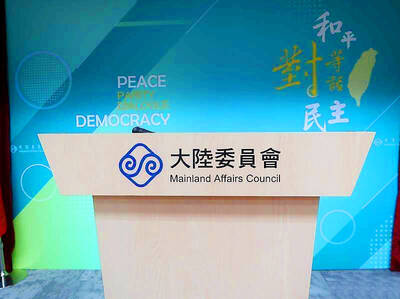Babak Parviz wears contact lenses. But he’s not yet using the new contact lenses he’s made in his Seattle laboratory. Containing electronic circuits, they look like something from a science fiction movie. He’s now going to add some extremely small light emitting diodes (LEDs), helping turn his prototype contact lenses into a sophisticated personal display — the tiniest one possible.
As an assistant professor of electrical engineering at the University of Washington, Parviz works on bio-nanotechnology, self-assembly, nanofabrication and micro-electro mechanical systems. He makes tiny but functional electronic devices and, using nanotechnology and microfabrication techniques, integrates them onto polymers or glass using a process known as self-assembly.
So how did he think of making a “bionic” contact lens?
“Imagine a person with that kind of research expertise and background,” says Parviz. “Imagine also the same person waking up every morning and putting a contact lens in his eye.”
Making the connection wasn’t hard, as Parviz had also been thinking about unconventional displays. Contact lenses are made from flexible transparent polymers, just the sort of challenging material that Parviz likes to stick tiny electronic circuits on. “The driver is not to make something small. The driver is to make something that’s cool and useful. Having a display in a contact lens is very useful,” he says.
So far, he’s shown that high-performance circuitry including microLEDs can be incorporated on to transparent, thin, flexible plastic substrates. The circuits involve making metal layers a few nanometers thick linked to LEDs that are about one-third of a millimeter across. A microfabrication technique known as self-assembly relies on capillary effects to bring together pre-shaped pieces of circuit.
The prototype contact lens — which will eventually contain LEDs — has yet to be powered up.
“We’re looking at two different ways to transmit power,” he says. “One is radio frequency power transmission. We need antennae on these contact lenses anyway because we need to transmit data to them. The other way we’re looking at right now is to incorporate photovoltaic [solar] cells.”
Power isn’t the hardest problem. A contact lens sits directly on the surface of the eye, much too close for the eye to focus on.
“To create the focused image we have to manipulate the light rays,” says Parviz. “You can create a focused image if you use laser instead of LEDs.”
If shining very low power diode lasers on to the retina seems risky, then microLEDs might be the answer. These provide diffuse light and, to make them work, Parviz might integrate an array of individual micro-lenses into the contact lens.
All this raises questions of biocompatibility: The electronics in the contact lenses must not harm the eye. If that’s assured, then the idea of a fully functional wireless display on a contact lens might seem, at first, to have many uses.
Parviz talks about augmented reality, such as superimposing text messages or direction arrows on your view of the world.
However, Professor James Wolffsohn of Aston University in Birmingham, England, isn’t enthusiastic. As the head of optometry, his research interests include contact lenses.
“I’ve never seen anyone try and print circuits on to a contact lens,” Wolffsohn says.
He points out that a contact lens is around 14mm wide, compared with the pupil’s diameter of between 4mm and 5mm. He reckons that doesn’t leave a lot of space for electronics without interrupting vision.
“The focusing would be the real issue. These are incredibly close to the eye,” Wolffsohn says, adding that while dust in a contact lens is uncomfortable, you don’t see it because it’s just too close.
The same applies to images on the contact lens.
“There would have to be some projection technology for it to appear at a distance that you could then focus on. I can’t really see them generating a projection through a contact lens,” he says.
Wolffsohn also doesn’t think the research will help low-vision sufferers who need high-contrast large-text solutions; only a very small number wear contact lenses already. Most people commonly needing vision correction choose glasses, and, as for laser diodes: “There would certainly be issues about laser damage to the retina.”
Nevertheless, Wolffsohn is attracted to the idea of putting electronics onto glasses. There’s more space and no biocompatibility issues, while image projection is an easier proposition.
His verdict on using contact lenses as a display device?
“They wouldn’t be my starting point if I had this technology,” Wolffsohn says.
But whichever way this research goes, it’s worth keeping an eye on.

MORE VISITORS: The Tourism Administration said that it is seeing positive prospects in its efforts to expand the tourism market in North America and Europe Taiwan has been ranked as the cheapest place in the world to travel to this year, based on a list recommended by NerdWallet. The San Francisco-based personal finance company said that Taiwan topped the list of 16 nations it chose for budget travelers because US tourists do not need visas and travelers can easily have a good meal for less than US$10. A bus ride in Taipei costs just under US$0.50, while subway rides start at US$0.60, the firm said, adding that public transportation in Taiwan is easy to navigate. The firm also called Taiwan a “food lover’s paradise,” citing inexpensive breakfast stalls

TRADE: A mandatory declaration of origin for manufactured goods bound for the US is to take effect on May 7 to block China from exploiting Taiwan’s trade channels All products manufactured in Taiwan and exported to the US must include a signed declaration of origin starting on May 7, the Bureau of Foreign Trade announced yesterday. US President Donald Trump on April 2 imposed a 32 percent tariff on imports from Taiwan, but one week later announced a 90-day pause on its implementation. However, a universal 10 percent tariff was immediately applied to most imports from around the world. On April 12, the Trump administration further exempted computers, smartphones and semiconductors from the new tariffs. In response, President William Lai’s (賴清德) administration has introduced a series of countermeasures to support affected

CROSS-STRAIT: The vast majority of Taiwanese support maintaining the ‘status quo,’ while concern is rising about Beijing’s influence operations More than eight out of 10 Taiwanese reject Beijing’s “one country, two systems” framework for cross-strait relations, according to a survey released by the Mainland Affairs Council (MAC) on Thursday. The MAC’s latest quarterly survey found that 84.4 percent of respondents opposed Beijing’s “one country, two systems” formula for handling cross-strait relations — a figure consistent with past polling. Over the past three years, opposition to the framework has remained high, ranging from a low of 83.6 percent in April 2023 to a peak of 89.6 percent in April last year. In the most recent poll, 82.5 percent also rejected China’s

PLUGGING HOLES: The amendments would bring the legislation in line with systems found in other countries such as Japan and the US, Legislator Chen Kuan-ting said Democratic Progressive Party (DPP) Legislator Chen Kuan-ting (陳冠廷) has proposed amending national security legislation amid a spate of espionage cases. Potential gaps in security vetting procedures for personnel with access to sensitive information prompted him to propose the amendments, which would introduce changes to Article 14 of the Classified National Security Information Protection Act (國家機密保護法), Chen said yesterday. The proposal, which aims to enhance interagency vetting procedures and reduce the risk of classified information leaks, would establish a comprehensive security clearance system in Taiwan, he said. The amendment would require character and loyalty checks for civil servants and intelligence personnel prior to